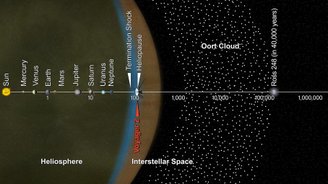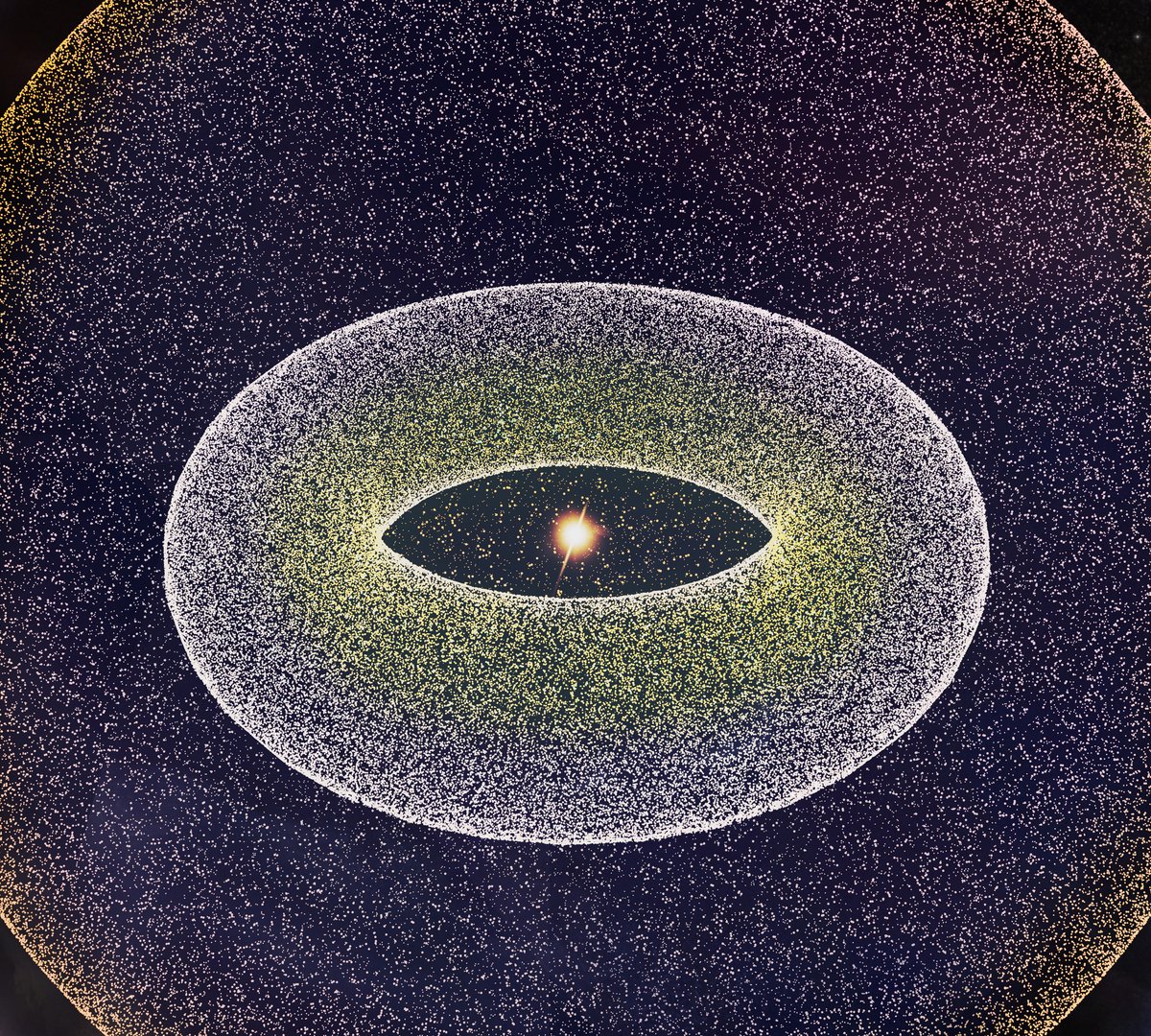It is so far away that even scientists to date have not been able to calculate it in kilometers or light years. The Oort Cloud is a distant region located almost at the ‘edge’ of the Solar System. The US National Aeronautics and Space Administration (NASA) explains in an official publication: The cloud is located between 2 thousand and 100 thousand Astronomical Units (AU) from the Sun.
Each AU corresponds to approximately 150 million kilometers; This measurement is based on the distance between the Earth and the Sun. The inner edge of the Oort Cloud can be between 2 thousand and 5 thousand AU, while the outer edge can reach up to 100 thousand AU from the center of the Solar System.
Current technology does not yet allow astronauts to be sent to the Oort Cloud. For example, if NASA’s Voyager 1 probe continues at its current rate, it will take about 300 years to get there. Even if we were traveling at the speed of light, it would take about 28 days to reach the inner edge of the region and up to a year and a half to reach the outer edge.
The existence of the Oort Cloud was proposed for explanation by Dutch astronomer and astrophysicist Jan Oort. The origin of long-period comets and why they seem to come from all directions in the cosmos. The scientist was right, because this region may be home to many of the oldest comets, such as Siding Spring (C/2013 A1).
“Scientists believe that the Oort Cloud is a giant spherical shell surrounding our Solar System. It resembles a large, thick-walled bubble of icy space debris the size of mountains and sometimes even larger. The Oort Cloud may contain billions, even trillions, of objects,” explains NASA.
Oort Cloud: At the edges of the Solar System
In addition to being home to many of the long-period comets that appear to be visible from any direction, scientists suggest Oort Cloud contains billions of other objects. Based on the data collected, researchers indicate that this region consists of comet-like icy bodies, some as large as mountains.
In any case, since scientists have not yet been able to directly observe the Oort Cloud, they cannot confirm that long-period comets actually come from this region.
For example, it is believed that Comet Siding Spring may have originated here, as it would only return to the interior of the Solar System for over 700,000 years. However, it is not possible to confirm this theory precisely because the Oort Cloud is too far away for us to reach.
NASA explains The Oort Cloud formed approximately 4.6 billion years ago, after the creation of the planets, while the Solar System was still hosting planets. — small rocky bodies that appear along with planets. Scientists believe that the gravity of these large celestial bodies pushed the icy planets to the edges of the system, giving rise to the Oort Cloud.
Icy objects in the Oort Cloud can move in any direction, unlike other objects close to planets or even the Sun.

Astronomers suggest that one of these icy objects that passed near Mars and will not return for 740,000 years is Comet Siding Spring. In fact, these comets have never been seen inside the cloud.
“Although it is too distant to be observed directly, The Oort Cloud is believed to be the source of most historically observed long-period comets —Those that take more than 200 years (and often much longer) to orbit the Sun (Most short-period comets that take less time to complete orbit come from another source, the Kuiper belt),” the encyclopedia Britannica explains.
Follow the latest developments in astronomy and science at TecMundo. If you want, take the opportunity to discover whether the planet Sedna holds the key to solving the mystery of the Ninth Planet in the Solar System. Until next time!
Source: Tec Mundo
I’m Blaine Morgan, an experienced journalist and writer with over 8 years of experience in the tech industry. My expertise lies in writing about technology news and trends, covering everything from cutting-edge gadgets to emerging software developments. I’ve written for several leading publications including Gadget Onus where I am an author.












